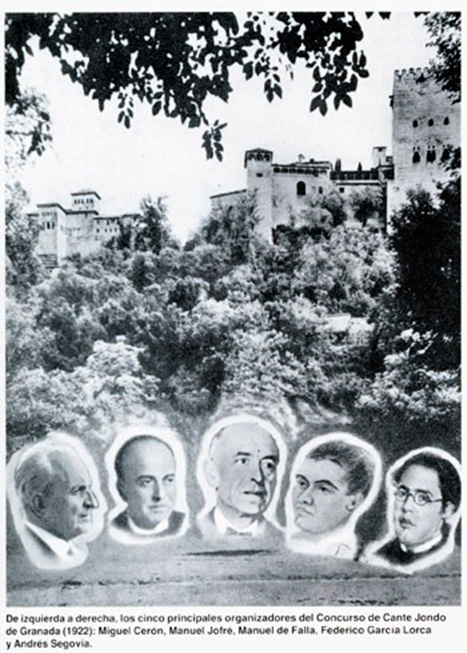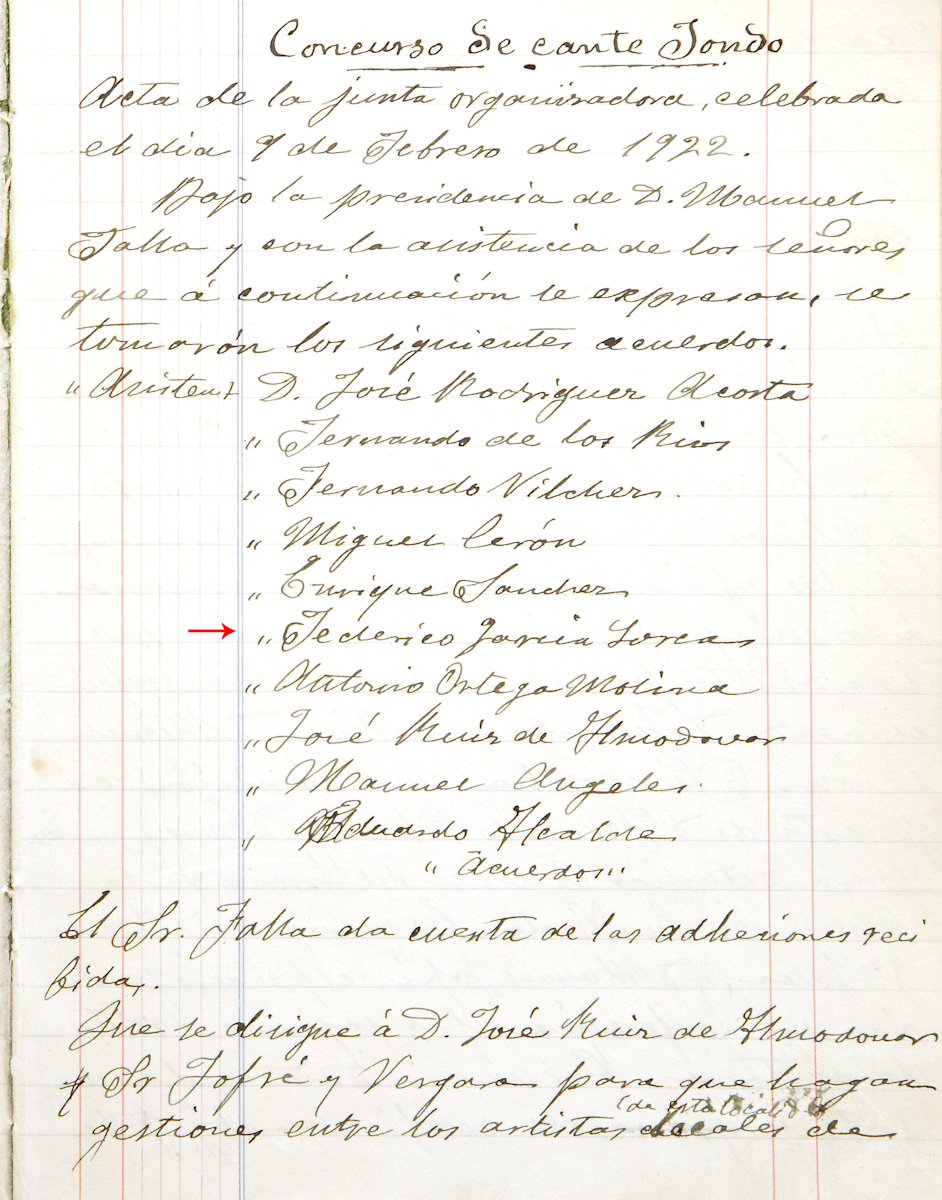If a walk through the Alhambra in the sixteenth century by the poet Juan Boscán and the Venetian ambassador Andrea Navagero meant the entry of the new metric in Spanish poetry, a similar journey, but four centuries later, at the end of December 1921, along the paths of the Generalife, by the musician Manuel de Falla and his friend Miguel Cerón (Lorca’s confidant, music lover and witness to the commissioning of The Butterfly’s Evil Spell in a viewpoint in the gardens of the Alhambra) promoted the organization of the 1st Flamenco Song Contest which was held on June 13 and 14, 1922 in the Plaza de los Aljibes of the Arab monument. The contest, supported by dozens of Spanish and international writers, painters and musicians, although not without controversy before and after, meant the artistic and intellectual recognition of popular music and, in particular, of the “primitive Andalusian singing” that in those years barely survived in the memory and the voice of some singers and was in danger of being assimilated to other adulterated manifestations such as the cuplé.

The contest was held at a time when hope and optimism were gaining the upper hand over the ninety-year malaise that had stained Spanish society black. Just a year before the competition, on July 22 and August 9, 1921, the Annual Disaster in the Rif War, in which 11,500 Spanish soldiers lost their lives, had questioned the monarchy of Alfonso XIII, fertilized the military coup of Primo de Rivera and opened the way to the Republic where the new generation of artists and thinkers, many of them linked to the contest, found the form for their avant-garde concerns.
The attempts that Falla himself had made to transcribe the essential songs into musical notation had failed.
The contest began in the Albaicín, in the tertulias that brought together in the carmen of Alonso Cano, owned by Fernando Vílchez (an “open book of memories and nostalgia”, according to Manuel Orozco, and a man of “a Zuloaga but luminous anatomy”, according to the portrait of Eduardo Molina Fajardo) to characters such as Manuel de Falla, who had settled in the city in 1920; the guitarist Miguel Jofré; the engraver, stage designer and so much more Hermenegildo Lanz; the painter Ramón Carazo; the concert pianist Andrés Segovia (when he visited the city); the professor Fernando de los Ríos and Federico García Lorca, one of the latest additions. In those meetings Falla lamented that “flamenco” was adulterating the essence of deep song. “But at the same time that we assign it such a high value, Spanish vulgarity turns away from it with contempt as if it were something sinful and poisoned,” he added. Forgetfulness and contempt, when allied, the musician suspected, were capable of eating away at the main beams that supported the true song.
Falla, like other European composers, considered the catalog of rhythms and sounds exhausted. Just as the Hungarians Béla Bartók and Zoltán Kodály sought inspiration in the ancient styles that survived in popular music, Falla was convinced that he should focus on deep song. But what was authentic about it?

The old songs depended on the fragility of the memory of a few singers scattered throughout Andalusia who treasured in their heads and throats those “black sounds” that interested him. Falla’s own attempts to transcribe the essential songs into musical notation had failed. “Technically it is impossible to make the notation […] and therefore they cannot be filed in any document,” lamented Falla.
It was necessary to save that song, “tinged by the mysterious color of the first ages”, a “babbling”, just a wonderful “mouth undulation that breaks the sound cells of our tempered scale and that does not fit in the rigid and cold pentagram of our current music”, as Lorca himself explained in the lecture he gave on February 19. Not all the songs were of value, only the substantial ones: seguiriyas gitanas, polos, cañas, soleares, tonás…, or rather, the authentic songs and not the ones corrupted by the tavern flamenco and the intemperate jipío.
For José Mora Guarnido, Falla did not organize a contest, but “an artistic crusade for the salvation […] of a rich source of natural and popular music”.
But let’s go back to the Generalife, to that morning in December 1921 when Falla and Miguel Cerón not only decided to organize the contest but to start it immediately, perhaps sensing the obstacles, the controversies and the inevitable clashes that were to follow.